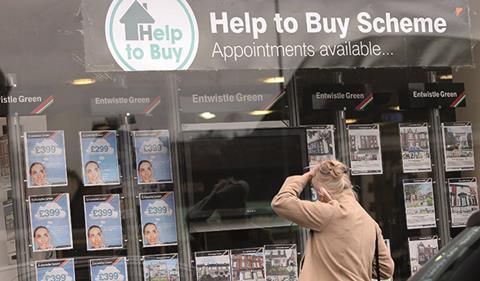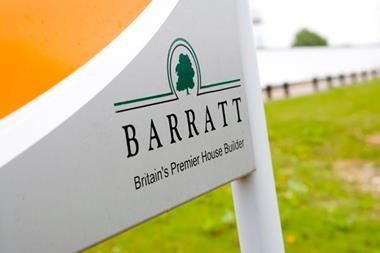Help to Buy has inflated prices, failed to deliver new homes where they are most needed and could push buyers into negative equity if the housing market slumps.

These are the findings of a six-month study into the scheme by Stockdale Securities analyst and Property Week columnist Alastair Stewart.
Stewart’s analysis, which comes hot on the heels of Property Week’s revelation that the government is reviewing the policy and has appointed the London School of Economics to conduct an evaluation, suggests the scheme provides few of the intended benefits and has put housing even further out of the reach of many.
Stewart adds that the Help to Buy scheme, which offers a government loan for 20% of the price of a new-build home (40% in London), has fuelled the sharp growth in housebuilders’ share prices in recent years.
They have become increasingly dependent on the scheme, he notes, citing the fact that more than 50% of sales at Persimmon, the UK’s largest housebuilder, are via the scheme, and that the figure is above 40% at Galliford Try, Redrow and Taylor Wimpey.
“Any early curtailment of Help to Buy, amid a radically different housing agenda by this government, could hit leading housebuilders,” he warns.
Our analysis of data suggests political controversy ahead - Alastair Stewart
This was underlined by the slump in housebuilder share prices on news of the review a fortnight ago. Although the government sought to assuage concerns by denying it would end the scheme early, Stewart has his doubts about the future of the policy.
“We believe the future of the scheme may now be ‘in play’,” he says. “Our analysis of data suggests political controversy ahead. Private completions have risen by a modest 7.7% compound annual growth rate (CAGR) since 2013, but the scheme now accounts for 33% of private deliveries. Help to Buy prices have delivered 10.6% CAGR since launch versus 7.0% for Land Registry average prices.”
This disparity in Help to Buy and private sales prices puts some who have benefited from the scheme at risk of negative equity if the housing market cools significantly, he adds. “Help to Buy prices paid by the main target group, first-time buyers (FTBs), have risen even faster than Help to Buy prices paid by non-FTBs,” he says.
“Additionally, Help to Buy prices are at a greater premium to underlying markets in the North and Midlands than in the South. An unintended political risk, in our view, is that FTBs, particularly in the North, face effective negative equity and potentially insurmountable hurdles against moving on.”
Hard or soft exit
Furthermore, argues Stewart, most of the estimated 120,000 homes built under Help to Buy would have been built anyway and they haven’t been built where there is greatest need.
“Our examination of government data suggests that these [new builds sold via Help to Buy] have predominated in the North and Midlands, where there is less housing need, but where builders held swathes of impaired land after the last housing crash,” he elaborates.
Despite benefiting from the scheme, not all housebuilders believe it should be extended beyond its scheduled end in 2021. Berkeley Group chief executive Rob Perrins told analysts in June “we think it should end in 2020/21. It’s inflationary”.

Stewart adds: “The main concern we have heard voiced is whether there will be a tapered or ‘soft’ exit rather than a sudden, ‘hard’ exit. We understand this is one of the main reasons for the apparent slowdown in land buying by most leading housebuilders.”
In the meantime, he says it is clear that the scheme has “disproportionately inflated prices and delivered homes where they were less in demand - delivering a windfall to margins and cashflows”.
The question now is whether the government comes to the same conclusion in its review.































No comments yet